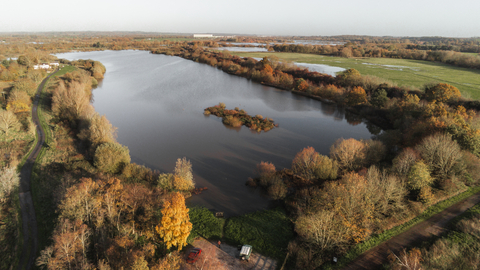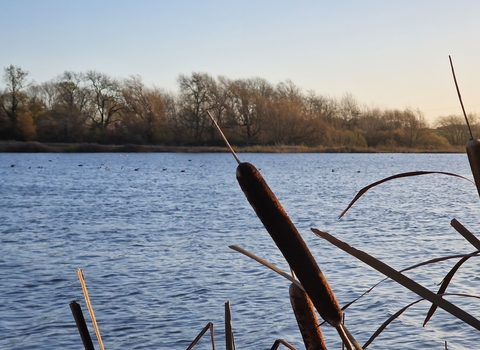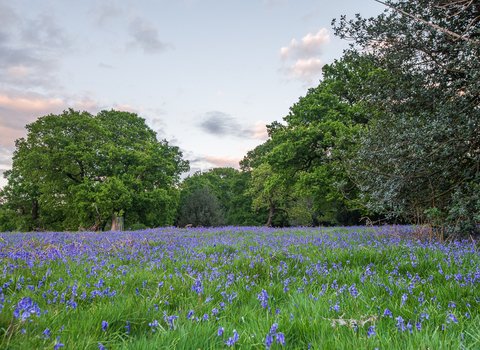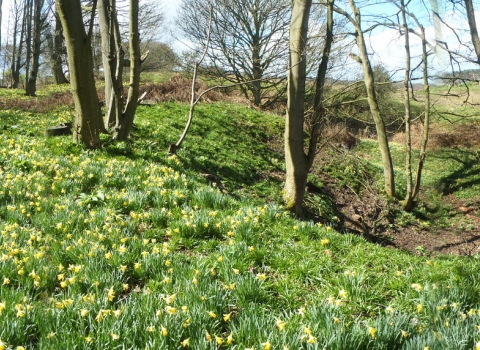Please note that the wooden bird hide at Croxall is currently closed due to vandalism making it unsafe.

Tom John Ellis
Croxall Lakes
Location
Know before you go
Dogs
When to visit
Opening times
Winter1st October - 31st March: The reserve car park is locked promptly at 5pm and opens at 8am.
Summer
1st April - 30th Sept: The reserve car park is locked promptly at 7pm and opens at 8am.
Best time to visit
March to May, September to DecemberAbout the reserve
Highlights
- The two main lakes attract a substantial number of wildfowl and waders during the autumn. The numbers of breeding birds has gradually increased since restoration works were completed.
- If you visit the reserve between November and January you may well see short-eared owls flying low above the areas of tall grasses. This large bird hunts for small mammals and is not commonly seen in Staffordshire.
- Otter signs such as footprints and spraints are commonly found on the reserve's riverbanks. However, this shy mammal is very difficult to spot.
Road to recovery
Croxall Lakes nature reserve is dominated by two large lakes situated at the joining of the River Trent and its tributaries, the Tame and the Mease. The site was formerly quarried for sand and gravel and is part of a complex of restored wetlands in the Trent Valley floodplain.
Since taking ownership of the reserve the Trust has carried out a number of projects to restore the site as a wildlife haven. Previous works include the excavation of scrapes for wading birds and the creation of shallows and reedbeds on the two main lakes. These provide cover and nesting areas for breeding birds.
More recently the Trust has undertaken extensive works along the river bank. Parts of the banks have been re-profiled and the resulting soil deposited into the lake to make more shallows and a larger reedbed. The project, known as 'river braiding', creates a diversity of river features with still pools, shallow riffles and gravel islands. This helps to restore natural river processes and better wildlife habitat.
Dabbling ducks, wildfowl and waders
The reserve attracts large numbers of wildfowl and wading birds. Why not take advantage of the reserve’s two bird hides? One of the hides gives a great view across the 26 acre main lake where, during the winter, you will see a number of different species of wildfowl such as wigeon, teal or possibly smew, not commonly seen in Staffordshire.
The other hide looks out across the reserve’s other smaller lake and main wildlife scrape. During the spring and summer months, look out (or listen!) for ground nesting wading birds such as lapwing, oystercatcher and redshank.
Not just birds!
Wetlands are not just good places to see bird life. Otter signs are frequently found on the river corridor, there has been the occasional water vole sign and harvest mice are building their nests in the areas of reed near the car park. Wetlands are also great places to see insects, with the scrapes providing habitat for a number of different species of dragonfly and damselfly.
Mangagement Plan
Read our management plan for Croxall Lakes on how we are managing the site for both people and wildlife by clicking here
A Living Landscape
This nature reserve is part of the Staffordshire Rivers Living Landscape
'Living Landscapes' is The Wildlife Trusts innovative approach to nature conservation and involves focusing our efforts on improving the wider landscape to make it better for wildlife.
Find out more here This nature reserve is part of the Central Rivers Initiative









